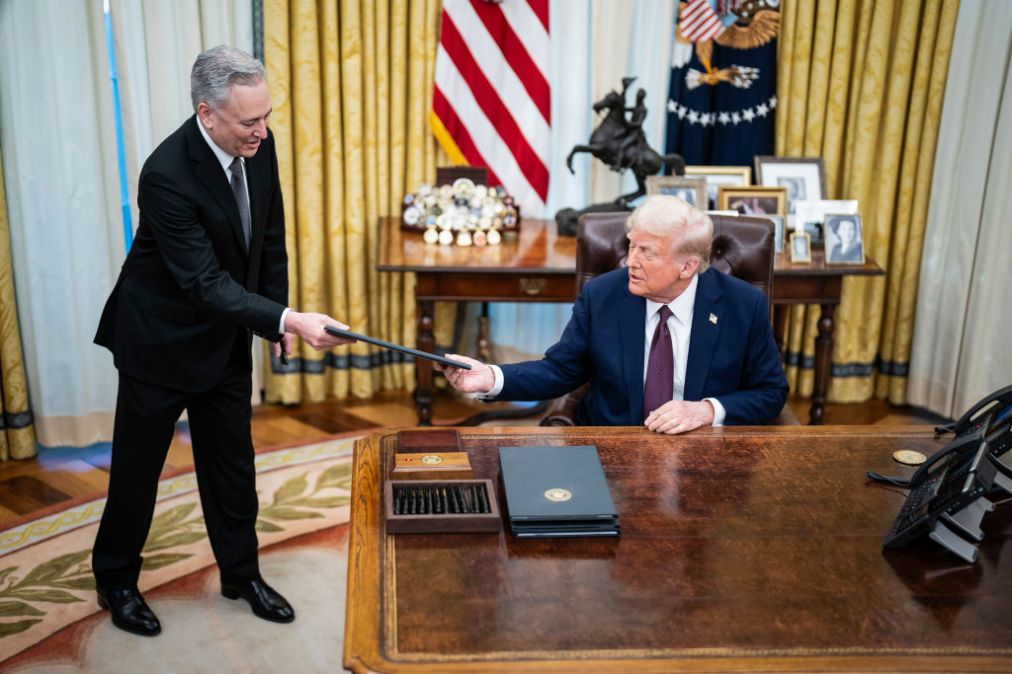Chief AI officers must be preserved in the Trump administration

In the midst of a new presidential administration, discussions about the future of U.S. artificial intelligence policy remain at the forefront of everyone’s mind across industry, government and civil society.
On Jan. 20, President Donald Trump repealed the Biden administration’s AI executive order . Three days later, Trump signed his own EO on Removing Barriers to American Leadership in Artificial Intelligence. The order directs actions to advance “the policy of the United States to sustain and enhance America’s global AI dominance in order to promote human flourishing, economic competitiveness, and national security.” These actions include the immediate review of all actions in the Biden AI EO and the suspension, revision, or rescission of anything inconsistent with or that presents obstacles to achieving Trump’s policy.
One particularly practical and impactful measure from the Biden EO should not be overlooked and deserves safeguarding: the establishment of chief AI officers in federal agencies. This key initiative, designed to ensure cohesive leadership and direction in AI adoption and integration across the government, should remain integral to the nation’s AI strategy moving forward.
CAIO leaders have been valuable both in government and the private sector for driving modernization and operational excellence. The CAIO role provides an important structural piece of the puzzle that federal agencies need to incorporate AI into their operations effectively. Preserving CAIOs is a non-political, practical measure to ensure the government can confidently address both the complexities and advantages that arise from the widespread integration of AI.
There are two audiences from the incoming administration whose opinions will matter in relation to the future of CAIOs in the government. First, the new “AI czar” David Sacks and his team: Michael Kratsios, who is slated to return to direct the Office of Science and Technology Policy;) Sriram Krishnan, senior policy advisor for AI at OSTP; Lynne Parker, the incoming head of the President’s Council of Advisors on Science and Technology; and Mike Waltz, assistant to the president for national security affairs.
This team of senior officials will have a significant role in shaping the administration’s approach to AI and driving measures to advance federal adoption of AI. Three of them — Sacks, Kratsios and Waltz — are specifically directed by the president’s EO to lead the development of an AI action plan.
The second relevant audience is the new Department of Government Efficiency, led by Elon Musk. DOGE is engaged in measures to streamline federal operations, reduce waste, and align government processes for greater efficiency. Preservation of CAIOs within federal agencies, and appointment of experts in government and technology to fill these positions, should be central to the efforts of both the AI czar and the DOGE.
Building a leadership structure for modernization
The U.S. government has persistently faced challenges in modernization, often lagging the pace of the private sector due to systemic challenges including bureaucracy, fragmented agency structures, and outdated procurement processes that prioritize legacy systems.
Unlike the private sector, where competition drives rapid adoption of cutting-edge technologies, government agencies often face longer approval cycles and a lack of standardized approaches to implementing new technologies. These factors make it difficult to deploy new technologies such as AI, creating additional barriers that have left the federal government trailing the private sector when it comes to digital transformation, services improvements, and cost reduction.
One prime example of how the chief AI officer function can transform government is already in motion at the Department of Defense, where the chief digital and artificial intelligence officer acts as the department’s principal authority on data, analytics, and AI. Tasked with integrating these capabilities across the entire defense enterprise, the CDAO ensures unity of mission, tighter interagency coordination, and a strategic outlook for AI development and deployment.
This leadership has contributed to tangible advancements in AI adoption. Most recently, the CDAO launched the AI Rapid Capabilities Cell and “Frontier AI” pilots in partnership with the Defense Innovation Unit — an initiative designed to accelerate cutting-edge AI solutions for both warfighting and enterprise management.
By consolidating resources, testing AI in real operational environments, and collaborating closely with both the private sector and other facets of the defense ecosystem, the CDAO is working to streamline AI innovations. In doing so, the DOD demonstrates a case study as to how a chief AI officer’s mandate — spanning policy, technology, and workforce readiness — can be a game-changer for any federal agency aiming to modernize at scale. Notably, the CDAO was established prior to the directives laid out in Biden’s AI EO, but CAIOs at other agencies have gone on to resemble this position in the context of their own agency’s mission and structure.
The key to unlocking AI’s full potential in the public sphere lies in having dedicated leaders who understand both the technology and the unique complexities of government operations. CAIOs fulfill this role by driving the adoption of transformative AI solutions, ensuring their alignment with agency missions and public trust and establishing measurable frameworks to bolster efficiency.
These efforts directly support the DOGE goal to dismantle bureaucracy and reduce waste, and will support the AI czar’s work in transforming outdated practices into agile, future-oriented capabilities across government. However, the effectiveness of CAIOs depends on sustained commitment.
CAIOs in government are relatively new, having only just begun laying the groundwork for a cohesive, long-term approach to AI adoption. Removing these roles prematurely may disrupt ongoing initiatives, and stall momentum that is critical to modernizing federal services. By preserving the CAIO function in this administration, it ensures continuity and that the progress made is not lost, but rather expanded upon, setting the stage for further modernization.
Bridging public and private expertise for transformative solutions
To achieve private-sector-level efficiency in government, it is not enough to simply adopt AI technologies. The government must also prioritize engaging with key partners in the private sector to collaborate for the purpose of enabling federal agencies to deliver on their missions effectively, efficiently, and securely.
The tech industry strongly supports government modernization because an efficient, technologically advanced government benefits society as a whole, enabling better public services, stronger national security, and a competitive global economy. To achieve this goal, industry has already been advocating for procurement practices that are agile and flexible enough to accommodate these emerging technologies.
Successful partnership across sectors for adopting AI in government requires clear leadership and expertise, which is where CAIOs become indispensable. CAIOs can act as critical partners in translating the tech industry’s innovations into actionable, scalable solutions for federal agencies. They understand the complexities of government operations and provide the leadership needed to navigate regulatory frameworks, ensure ethical AI use, and integrate new technologies in ways that align with agency missions and public trust.
By collaborating with CAIOs, the tech industry can help the government fully realize the transformative potential of AI while ensuring accountability and efficiency.
Chief AI officers are a smart investment for years to come
Streamlining government services and adopting new technologies are laudable goals, but without the leadership of CAIOs, these efforts risk becoming fragmented and ineffective. Ensuring the federal government has the structures and expertise in place to lead is not just smart policy — it’s an investment in a more efficient, responsive, and modern government that benefits all Americans.
For an administration focused on streamlining government, cutting waste, and improving performance, CAIOs are not a vestige from a prior presidency — they are a forward-looking solution that should be preserved and empowered.
Bethany Abbate is the manager of artificial intelligence policy at the Software & Information Industry Association.






